The Cornell Lab Bird Academy › Discussion Groups › Nature Journaling and Field Sketching › The Power of Comparison
-
 Tulsi plant and Ixora. Both are small and new to my garden. I definitely need a large hat. Got very glarey out there. I was pleasantly surprised to see how many questions I asked myself. And I carried a ruler.
Tulsi plant and Ixora. Both are small and new to my garden. I definitely need a large hat. Got very glarey out there. I was pleasantly surprised to see how many questions I asked myself. And I carried a ruler.
-
Crazy sequence. Working through my Bird Academy class after a travel break. Since I picked some beloved daffodils this morning, I decided to compare two similar ones. What are the part names? I wondered. Looked them up. Found images on the Daffodil Society pages. There's a daffodil society? I looked around the page. There is a National Daffodil Show? Where? 35 minutes from where I live? When? Next week! Now it is on my calendar. I just love daffodils!
-

-
 I compared a spruce tree to a larch tree in my front yard. The weather is still cold so I did most inside, and went outside to sketch the branches.
I discovered many details I had never noticed before about each of the tree.
This summer, will observe the leaves growth and fall to answer all the questions generated by the comparative study.
Thank you. This exercise opens our eyes. Elaborating the comparative study in my sketchbook gives an outstanding sketch page.
I compared a spruce tree to a larch tree in my front yard. The weather is still cold so I did most inside, and went outside to sketch the branches.
I discovered many details I had never noticed before about each of the tree.
This summer, will observe the leaves growth and fall to answer all the questions generated by the comparative study.
Thank you. This exercise opens our eyes. Elaborating the comparative study in my sketchbook gives an outstanding sketch page. -
I compared a sedge and a grass. I noticed how much wider the blades were on the sedge and they seemed sharper. The grass was softer, willowy. The sedge seemed to be encapsulated at the bottom where the blades and stem emerged. The grass seemed to emerge form the root.
-
 I live in the center of Bangkok. We do have a beautiful park in the middle of the city. It is where I took these pictures 3 days ago. It is hot right now so I did my observations from these pictures. I am not that good with proportions yet
I live in the center of Bangkok. We do have a beautiful park in the middle of the city. It is where I took these pictures 3 days ago. It is hot right now so I did my observations from these pictures. I am not that good with proportions yet -
Yes, I compared two plants in the Studio. Since its winter, not much is growing. Both plants have nodules where the leaves come out. Both are messy when the plant leaves die out, and both extend to the light. Both fian fine fuzzy hairs, but the Moses Plant flower has small seeds that have hairs, which I think would make the wind carry it away to repopulate in another area. This plant is easy to root in water. The flower on this is a pink/maroon colour. Never paid attention to the flower heads that turn into seed before. Kept the seed heads and will either do a germination test, or plant out. The second plant, I cannot seem to identify. Its in its third year growing and it spindly. I have cut it back before in the spring, when the plants go out , and it comes back. IT has small white nodule flowers with a flower but and two oblong petals beside the head.
-
I did the comparison with some Valentine/Birthday flowers because it is cold here today!


-

 This is a slightly different approach to comparison. I rescued a moth orchid two years ago and have never seen it bloom until today. Anticipating the miracle of finally finding out its color, all last week, I drew the lead bud every day, practicing my foreshortening skills and comparing the minute changes in the shape of the bud.
This is a slightly different approach to comparison. I rescued a moth orchid two years ago and have never seen it bloom until today. Anticipating the miracle of finally finding out its color, all last week, I drew the lead bud every day, practicing my foreshortening skills and comparing the minute changes in the shape of the bud. -

-

-
My artist partner is sketching alongside me and decided to do comparative studies on bird beaks, since some of the previous bird exercises had him noticing that they're a very weird structure and crucial to communicating the specific type of bird being depicted. (I did some different mosses we found on a hike). Aren't they cool!

-
I love the beak study. I wish I could draw like your artist friend!
-
-
I could keep track of how many birds are at feeder at different time of day, plus type of bird. I could track how many different animal prints I find in the snow over the course of the winter months. I can count how many times I spot a hawk, either red tailed or coopers, and where I saw them. Also a bald eagle!
-
This was an interesting exercise, and really made me think about why two items are similar and yet different. Both of these digger wasps were feeding on the same patch of mountain mint on different days, and it was amazing to see the size and coloration differences, making me wonder why certain adaptations are needed in a species and not in another. For example, the Great Black Digger Wasp was so much larger than all the other wasps, bees, and moths at the patch that it was instantly recognizable from my periphery when it flew in.

-
So creative! The entry is so organized, and the information looks interesting>
-
I really liked and learned from your post. It is deep winter here so it is nice to think about wasps.
-
-
I recall these tiny beautiful jewels darting by at a stream in a forest. At first sight I thought they were dragonflies but I knew something was off about them, something different. I took a photo. Before I started this course and nature journaling. But I remember it like it was yesterday because I was fascinated by these tiny, flying blue gems. I went home and looked for quite a while until I found them Damselflies. I never knew what set them apart in particular, just that I knew as a whole they looked different aside from the obvious overall size difference between a Damselfly and a Dragonfly. So I dug out my photos (as it is currently way too hot outside 98 F) and used that instead. And this worked great. Drawing both made me pay attention, much closer attention, to the tiny details what makes them actually different. Great exercise. Loved it. Will come in real handy with some of the songbirds that look so similar. And so many other similar beauties.

-
1. I learned to observe far closer then usual, but it also took the easier observation out of the landscape as a whole. Being so focused on a single object reduces the amount of attention that I could give anything else. 2. I think that there should be a focus on the art on the page, so you can remember the details later.

-
I headed out to my backyard to compare two types of container plants that grow well in my shaded woodlands. Through the comparison and observation I learned a lot about the plants themselves, and about my wrong assumptions.
- I had the plant names wrong (what I thought was lady slipper was actually bleeding heart) and I was misspelling fuchsia.
- I assumed that these plants were in the same family as they both had similar dual-color petals and similar filaments. Both are also deer resistant and attract hummingbirds.
- I also noticed that they flower very differently - the fuchsia has very round bulbs that come from stem clusters of three or four leaves. The bleeding heart flowers from a very delicate stem that shoots up from the roots, not connected to the flower clusters.
- I learned both of these plants are perennials when I assumed they were annuals.
- I learned to name the parts of the plant (i.e. filament instead of pollen stem)
 they appear to be very similar on the surface. My sketches are getting better (still not great, a lot of detail) but I started this course so that I would learn to slow down and live in the moment. That part is going well
they appear to be very similar on the surface. My sketches are getting better (still not great, a lot of detail) but I started this course so that I would learn to slow down and live in the moment. That part is going well -
Like you, I'm learning. What I love most is, like you express here, is seeing things in new ways. Even learning more.
-

-



-
This was a fun activity, it led me to look closer at each of these two ornamental non native flowers. And looked to see how they could be pollinated and wondered
 what their seeds looked like.
what their seeds looked like. -
April 12th, 2023, Connecticut. I noticed a little Sanguinaria blooming, and had to sketch it - and then I compared it to another, growing in different corner of the yard. Your prompt questions are super-pertinent to my effort - Balance is the key word. My writing took over the page. Next time I'll try those boxes! and write neatly, and perhaps make my observations more precise. Part of the problem may have stemmed from the fact that when I started the left half of the page, I hadn't chosen a subject for the right half yet (oops) and didn't really have a plan...

-

-
 I collected a pine cone on my walk today. I planned on getting another one form a different pine tree to compare them. I then realized we only have that type of pine tree in our neighborhood. I decided to improvise, and just use the one pinecone and compare the side view versus the top view since they do look a lot different. The top of the pinecone really had a pretty pattern, but I couldn’t really replicate the swirl of the pattern like the real thing.
I collected a pine cone on my walk today. I planned on getting another one form a different pine tree to compare them. I then realized we only have that type of pine tree in our neighborhood. I decided to improvise, and just use the one pinecone and compare the side view versus the top view since they do look a lot different. The top of the pinecone really had a pretty pattern, but I couldn’t really replicate the swirl of the pattern like the real thing.

-

 I did two comparison studies, one indoors (left) and one outdoors (right). I need to work on my outdoor sketching. It seems that the sun and wind moving the objects around made it more difficult for me to focus on drawing. I feel my outdoor sketch was more of a gesture drawing. Maybe the idea would be to take a photo of the outdoor items and refine when back indoors. I was able to take color notes and to make comparisons between the leaves, petals, etc.
I did two comparison studies, one indoors (left) and one outdoors (right). I need to work on my outdoor sketching. It seems that the sun and wind moving the objects around made it more difficult for me to focus on drawing. I feel my outdoor sketch was more of a gesture drawing. Maybe the idea would be to take a photo of the outdoor items and refine when back indoors. I was able to take color notes and to make comparisons between the leaves, petals, etc. -

Read More:
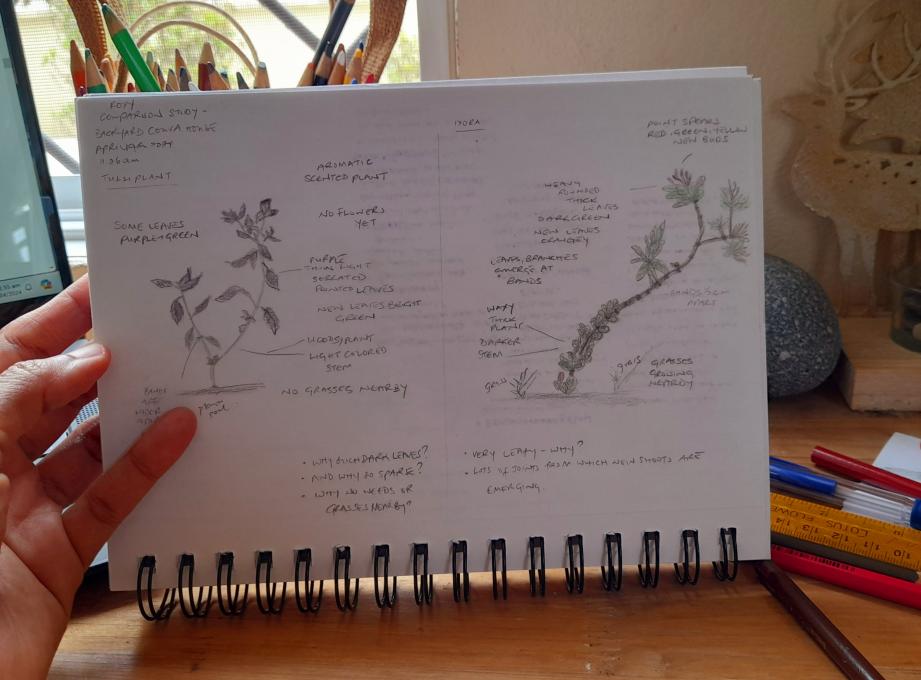 Tulsi plant and Ixora. Both are small and new to my garden. I definitely need a large hat. Got very glarey out there. I was pleasantly surprised to see how many questions I asked myself. And I carried a ruler.
Tulsi plant and Ixora. Both are small and new to my garden. I definitely need a large hat. Got very glarey out there. I was pleasantly surprised to see how many questions I asked myself. And I carried a ruler.
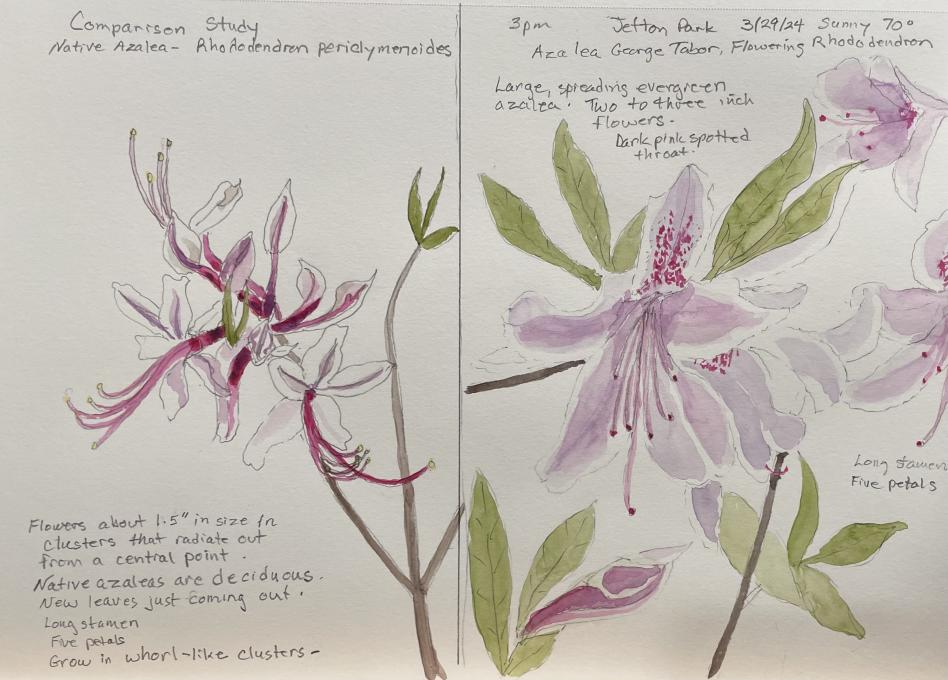
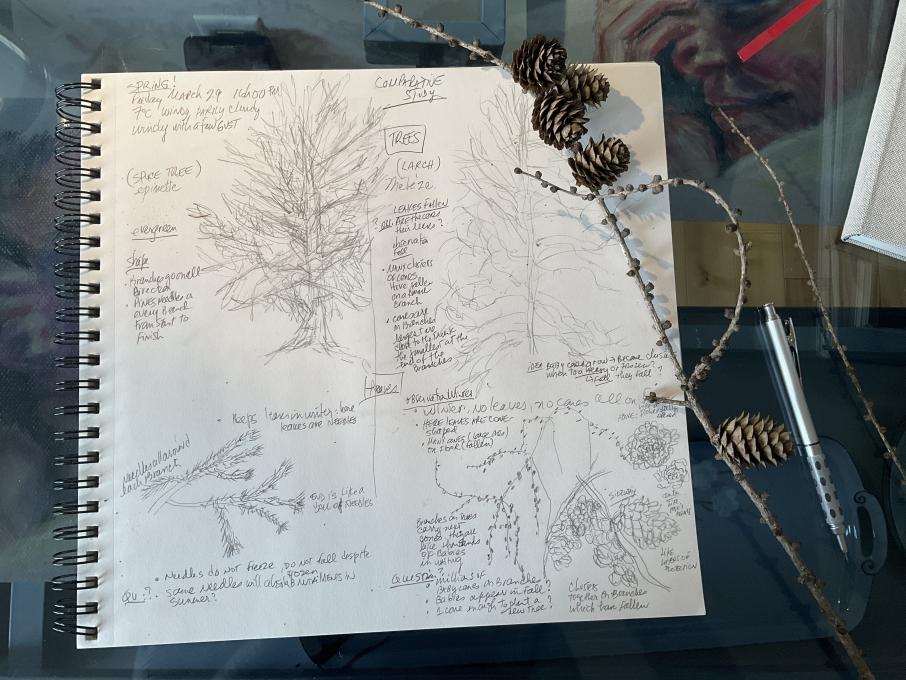 I compared a spruce tree to a larch tree in my front yard. The weather is still cold so I did most inside, and went outside to sketch the branches.
I discovered many details I had never noticed before about each of the tree.
This summer, will observe the leaves growth and fall to answer all the questions generated by the comparative study.
Thank you. This exercise opens our eyes. Elaborating the comparative study in my sketchbook gives an outstanding sketch page.
I compared a spruce tree to a larch tree in my front yard. The weather is still cold so I did most inside, and went outside to sketch the branches.
I discovered many details I had never noticed before about each of the tree.
This summer, will observe the leaves growth and fall to answer all the questions generated by the comparative study.
Thank you. This exercise opens our eyes. Elaborating the comparative study in my sketchbook gives an outstanding sketch page.  I live in the center of Bangkok. We do have a beautiful park in the middle of the city. It is where I took these pictures 3 days ago. It is hot right now so I did my observations from these pictures. I am not that good with proportions yet
I live in the center of Bangkok. We do have a beautiful park in the middle of the city. It is where I took these pictures 3 days ago. It is hot right now so I did my observations from these pictures. I am not that good with proportions yet 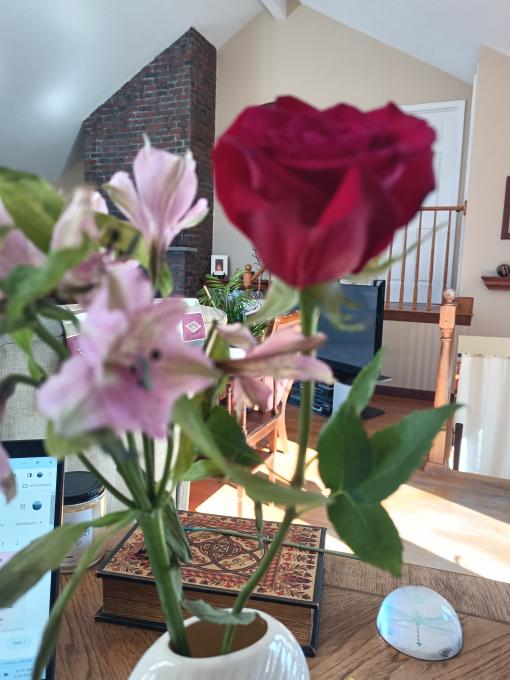

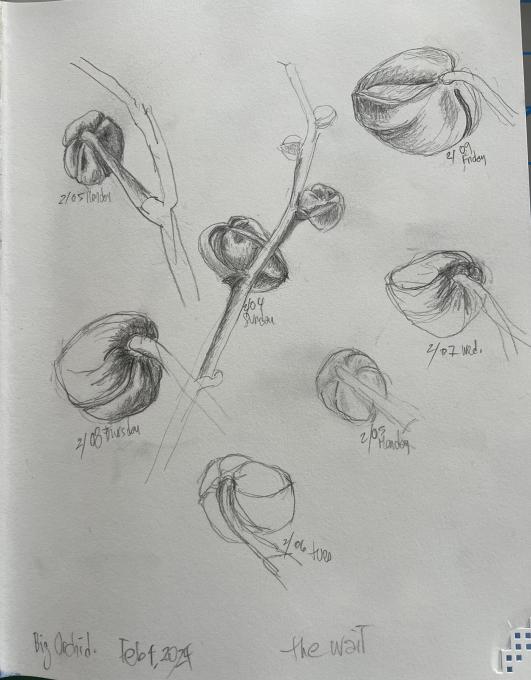
 This is a slightly different approach to comparison. I rescued a moth orchid two years ago and have never seen it bloom until today. Anticipating the miracle of finally finding out its color, all last week, I drew the lead bud every day, practicing my foreshortening skills and comparing the minute changes in the shape of the bud.
This is a slightly different approach to comparison. I rescued a moth orchid two years ago and have never seen it bloom until today. Anticipating the miracle of finally finding out its color, all last week, I drew the lead bud every day, practicing my foreshortening skills and comparing the minute changes in the shape of the bud. 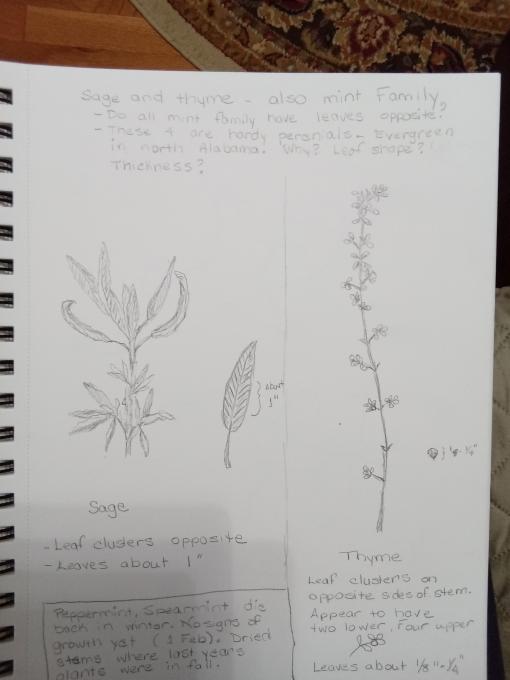
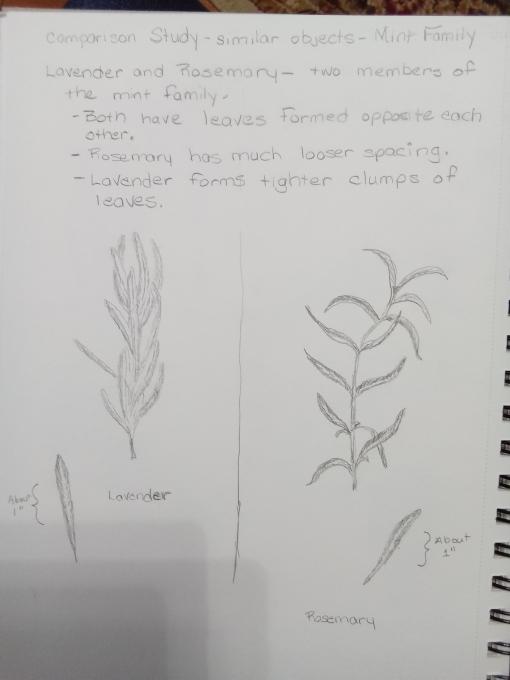

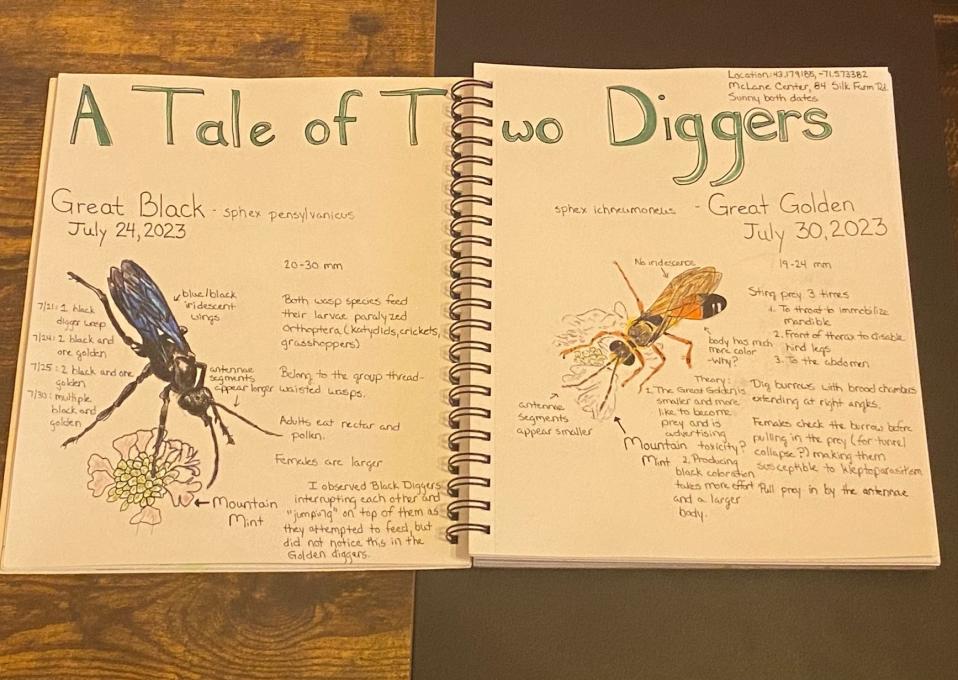
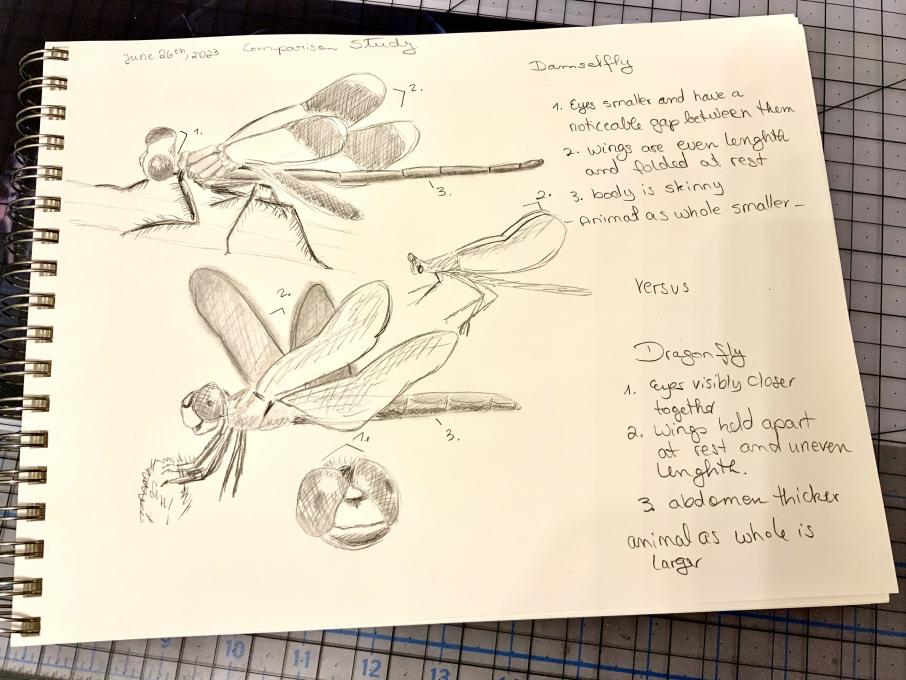

 they appear to be very similar on the surface. My sketches are getting better (still not great, a lot of detail) but I started this course so that I would learn to slow down and live in the moment. That part is going well
they appear to be very similar on the surface. My sketches are getting better (still not great, a lot of detail) but I started this course so that I would learn to slow down and live in the moment. That part is going well 

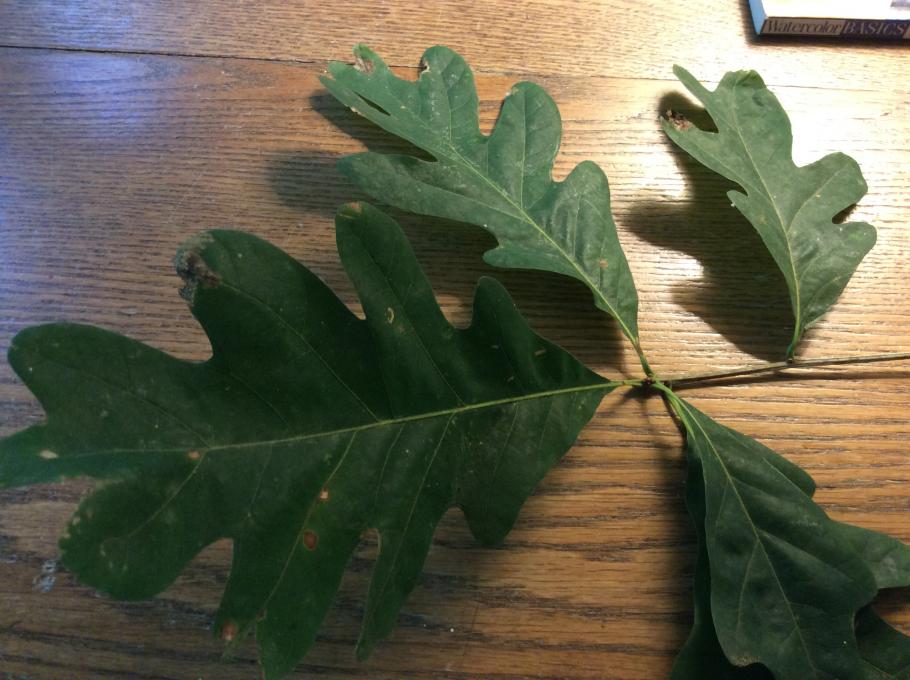
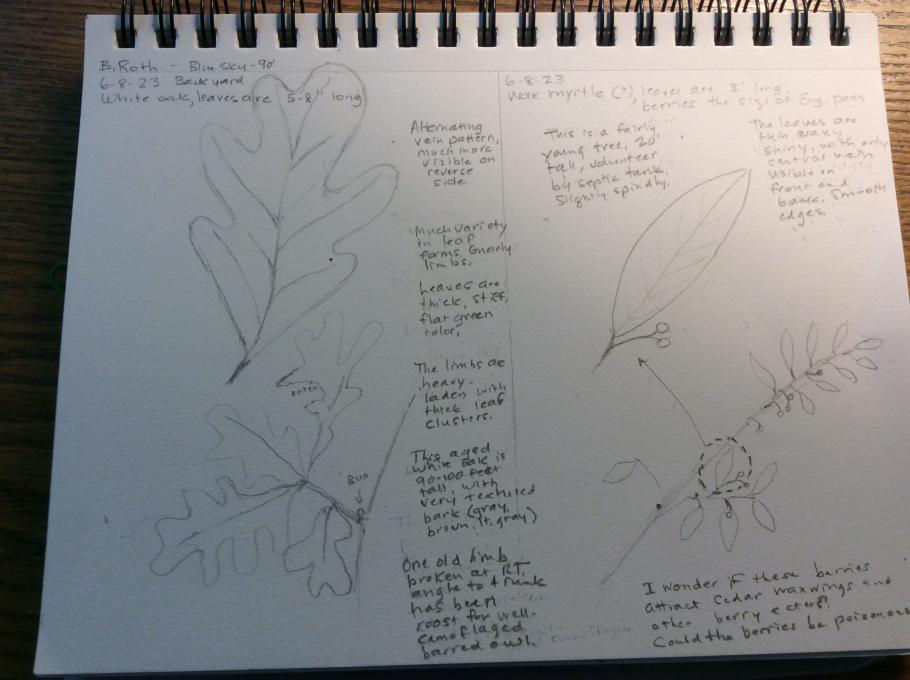
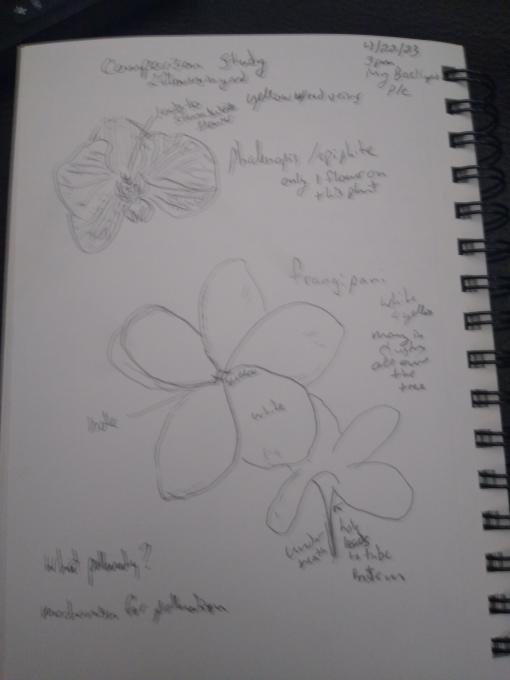 what their seeds looked like.
what their seeds looked like. 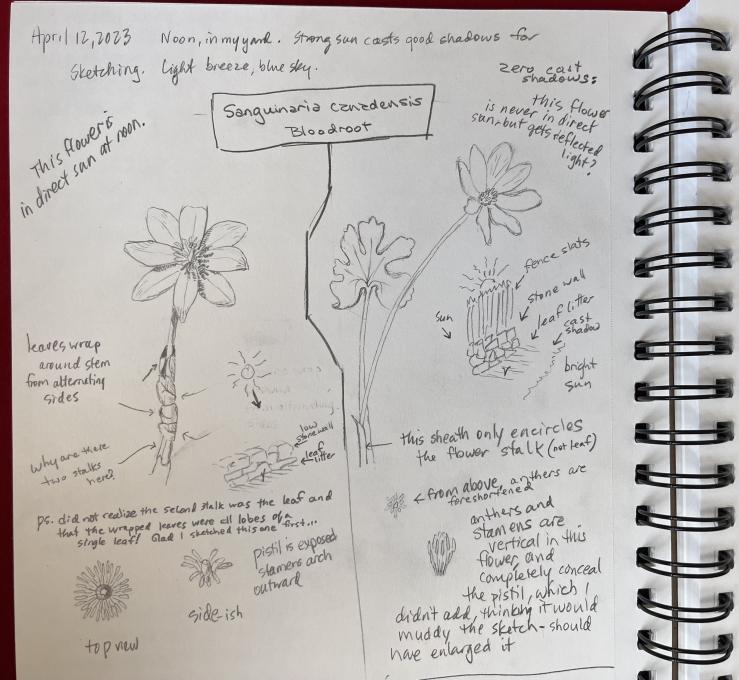

 I collected a pine cone on my walk today. I planned on getting another one form a different pine tree to compare them. I then realized we only have that type of pine tree in our neighborhood. I decided to improvise, and just use the one pinecone and compare the side view versus the top view since they do look a lot different. The top of the pinecone really had a pretty pattern, but I couldn’t really replicate the swirl of the pattern like the real thing.
I collected a pine cone on my walk today. I planned on getting another one form a different pine tree to compare them. I then realized we only have that type of pine tree in our neighborhood. I decided to improvise, and just use the one pinecone and compare the side view versus the top view since they do look a lot different. The top of the pinecone really had a pretty pattern, but I couldn’t really replicate the swirl of the pattern like the real thing.
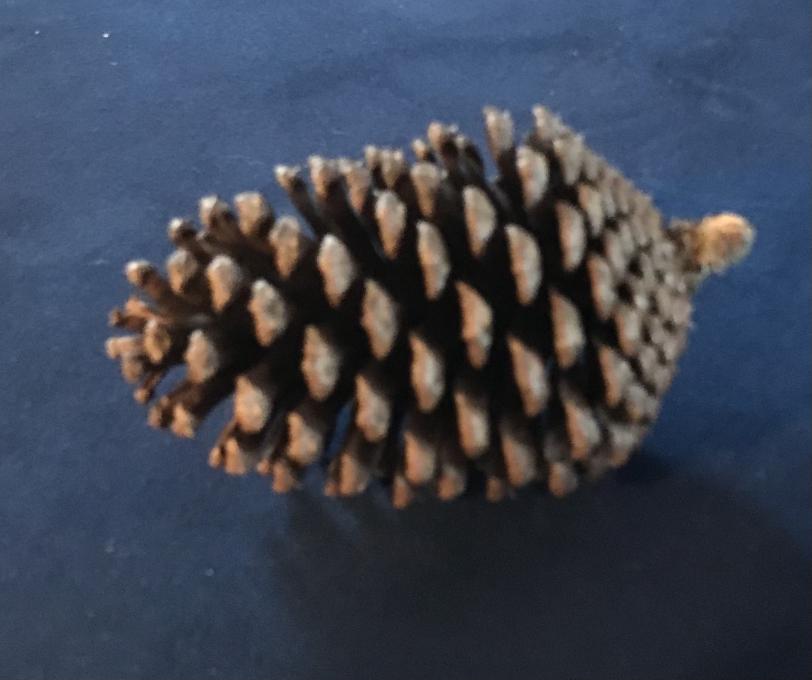
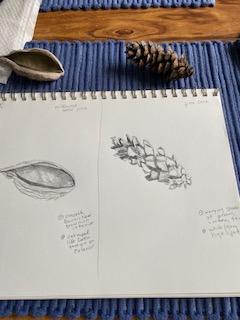
 I did two comparison studies, one indoors (left) and one outdoors (right). I need to work on my outdoor sketching. It seems that the sun and wind moving the objects around made it more difficult for me to focus on drawing. I feel my outdoor sketch was more of a gesture drawing. Maybe the idea would be to take a photo of the outdoor items and refine when back indoors. I was able to take color notes and to make comparisons between the leaves, petals, etc.
I did two comparison studies, one indoors (left) and one outdoors (right). I need to work on my outdoor sketching. It seems that the sun and wind moving the objects around made it more difficult for me to focus on drawing. I feel my outdoor sketch was more of a gesture drawing. Maybe the idea would be to take a photo of the outdoor items and refine when back indoors. I was able to take color notes and to make comparisons between the leaves, petals, etc. 